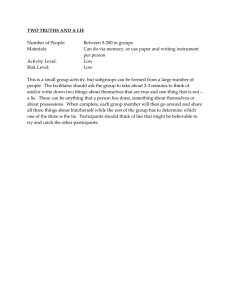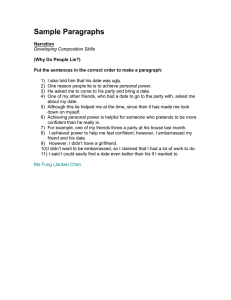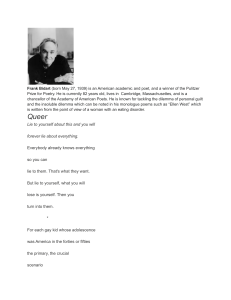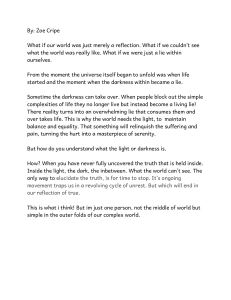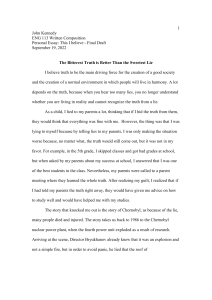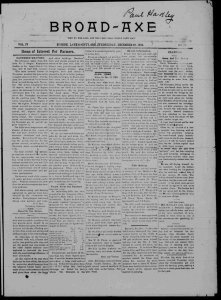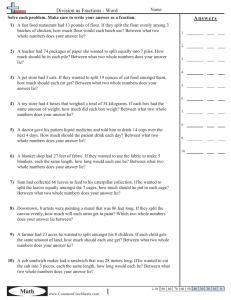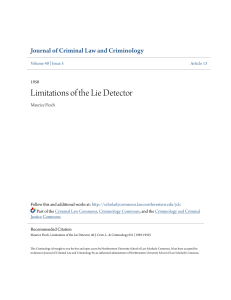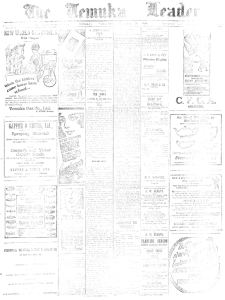Quiz 7 - OU Math Department
advertisement
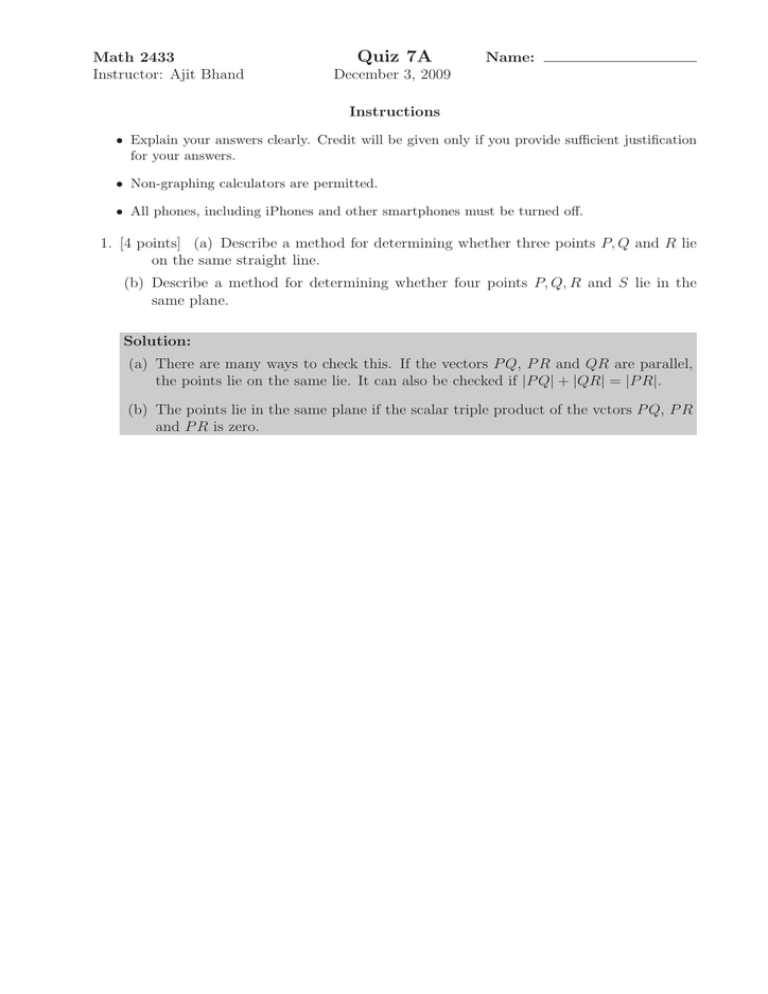
Math 2433 Instructor: Ajit Bhand Quiz 7A Name: December 3, 2009 Instructions • Explain your answers clearly. Credit will be given only if you provide sufficient justification for your answers. • Non-graphing calculators are permitted. • All phones, including iPhones and other smartphones must be turned off. 1. [4 points] (a) Describe a method for determining whether three points P, Q and R lie on the same straight line. (b) Describe a method for determining whether four points P, Q, R and S lie in the same plane. Solution: (a) There are many ways to check this. If the vectors P Q, P R and QR are parallel, the points lie on the same lie. It can also be checked if |P Q| + |QR| = |P R|. (b) The points lie in the same plane if the scalar triple product of the vctors P Q, P R and P R is zero. 2. [6 points] Determine whether the lines L1 and L2 are parallel, skew or intersecting. y+1 z−3 x−2 = = 3 1 2 x−1 y−2 z−5 L2 : = = . 2 −1 −3 L1 : Solution: The parametric equations for the lines are L1 : x = 2 + 3t, y = −1 + t, z = 3 + 2t L2 : x = 1 + 2s, 2 − s, z = 5 − 3s. The vectors in the directions of L1 and L2 are < 3, 1, 2 > and < 2, −1, −3 > respectively. Since they are not proportional, the lines are not parallel. To check if the lines are interesecting, we equate the corresponding x and y components to get 2s − 3t = 1 s+t=3 from which we get s = 2 and t = 1. Substituting this in the z coordinates of each, we see that they are different (3 + 2t = 5 6= 5 − 3s = −1). Hence, the lines do not interesect. In conclusion, the given lines are skew. Page 2 of 2
